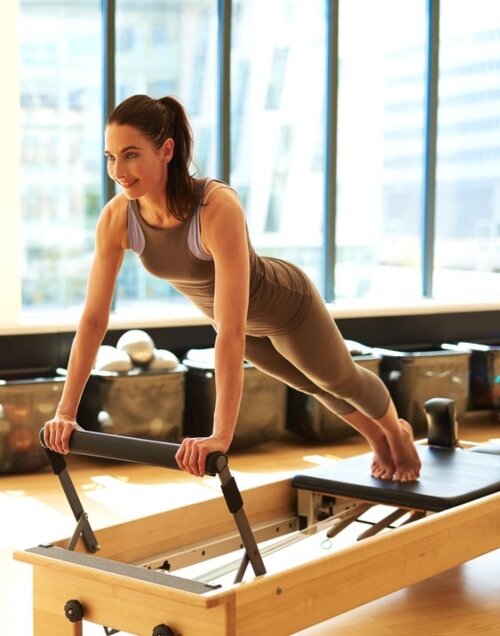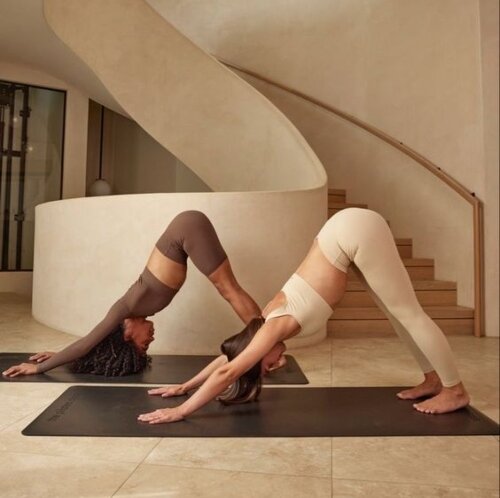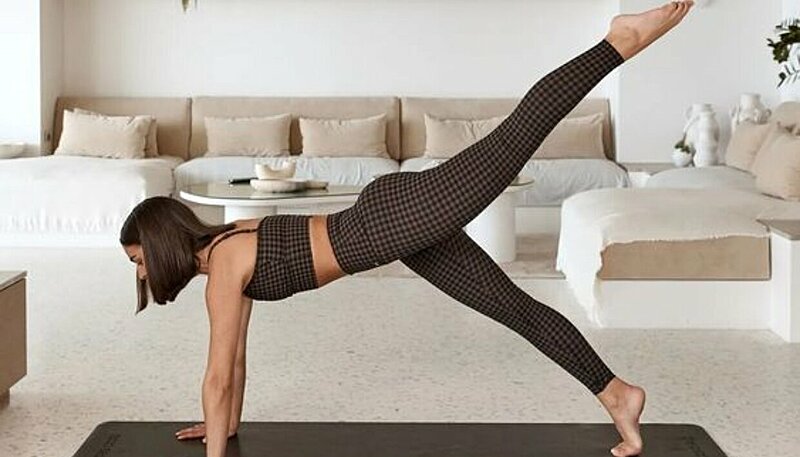If your fitness routine is starting to feel a bit boring, trying something new can make it exciting again. Taking Pilates classes might be just what you need to shake things up. Whether you choose a mat-based class or use a Pilates Reformer, this workout can breathe new life into your exercise routine. In this article, we'll explore the benefits of Pilates and how it can transform your body, helping you become stronger, more balanced, and healthier.
Swimming on Your Period: Answering 7 Frequently Asked Questions

What is Pilates?
Pilates is a type of exercise that focuses on low-impact movements to strengthen muscles, improve posture, and increase flexibility. Named after its creator, Joseph Pilates, this method includes exercises that target core strength, stability, and overall body conditioning. You can do Pilates on a mat or use special equipment like the Reformer, Cadillac, and Wunda Chair. It’s suitable for people of all fitness levels and goals.
Let’s Discover the Benefits of Pilates
1. Improves Core Strength
Pilates is great for building strong core muscles, including your abs, lower back, hips, and pelvis. A strong core helps with balance and stability, lowers the risk of injury, and enhances overall fitness.
2. Enhances Flexibility
Pilates involves lots of stretching and movements that improve your flexibility. Being more flexible helps prevent injuries and makes everyday movements smoother and more comfortable.
20 Possible Benefits of Drinking Lemon Water and the Side Effects
3. Boosts Posture and Alignment
Pilates teaches you about good posture and alignment. Strengthening the muscles responsible for good posture can correct imbalances, reduce back pain, and improve the alignment of your spine.
4. Increases Muscle Tone and Strength
Pilates uses controlled and precise movements to tone and strengthen muscles without making them bulky. It helps create long, lean muscles, giving you a more sculpted and toned body.

5. Promotes Mind-Body Connection
Pilates requires focus and controlled breathing, which enhances the connection between your mind and body. This mental engagement can reduce stress, improve mental clarity, and boost overall well-being.
6. Aids in Injury Prevention and Rehabilitation
Because Pilates is low-impact and emphasizes muscle balance and control, it’s often recommended to prevent injuries and aid in recovery. It improves body mechanics and supports the healing process by gently strengthening and stabilizing injured areas.
7. Improves Balance and Coordination
Many Pilates exercises challenge your balance and coordination, which are important for daily activities and sports. Better balance reduces the risk of falls and improves overall body control.
8. Supports Weight Loss
While Pilates may not burn as many calories as intense cardio workouts, it helps with weight losst by increasing muscle mass and boosting your metabolism. Pilates can also complement other exercises, creating a well-rounded fitness routine.
7 Sports Places for Exciting Fitness Experiences!

Who Should Start Pilates?
- Pilates is perfect for everyone, from beginners to experienced athletes. It provides a great foundation for those new to exercise and a challenging workout for fitness enthusiasts.
- If you have back pain or posture problems, Pilates can help. Its focus on core strength and alignment can alleviate pain and improve posture.
- Pilates is a safe and effective exercise for pregnant women, helping them stay strong and flexible throughout pregnancy. It also aids in postpartum recovery by rebuilding core strength and stability.
- Older adults can benefit from Pilates because it’s low-impact and emphasizes flexibility, balance, and core strength. It helps maintain mobility and independence, reducing the risk of falls and injuries.
- People recovering from injuries or surgeries can use Pilates as part of their rehab. Its controlled movements and focus on muscle balance help in recovery without putting too much strain on the body.

Who Should Avoid Pilates?
- People with severe osteoporosis (Osteoporosis is a bone disease that occurs when your bones lose density and mass, or when their structure and strength change). should avoid Pilates exercises that involve a lot of bending or twisting of the spine, as these can increase the risk of fractures.
- If you have specific medical conditions, like herniated discs or severe spinal injuries, talk to your doctor before starting Pilates. Some movements might need to be changed or avoided to prevent further issues.
- If you have a fresh injury or severe pain, you should avoid Pilates until you’re fully recovered or have a doctor’s okay. Doing Pilates with an untreated injury can make it worse.
- Pilates is low-impact and controlled, which might not appeal to those who like high-intensity, fast-paced workouts. However, Pilates can still complement high-intensity workouts by adding balance and flexibility training.
















